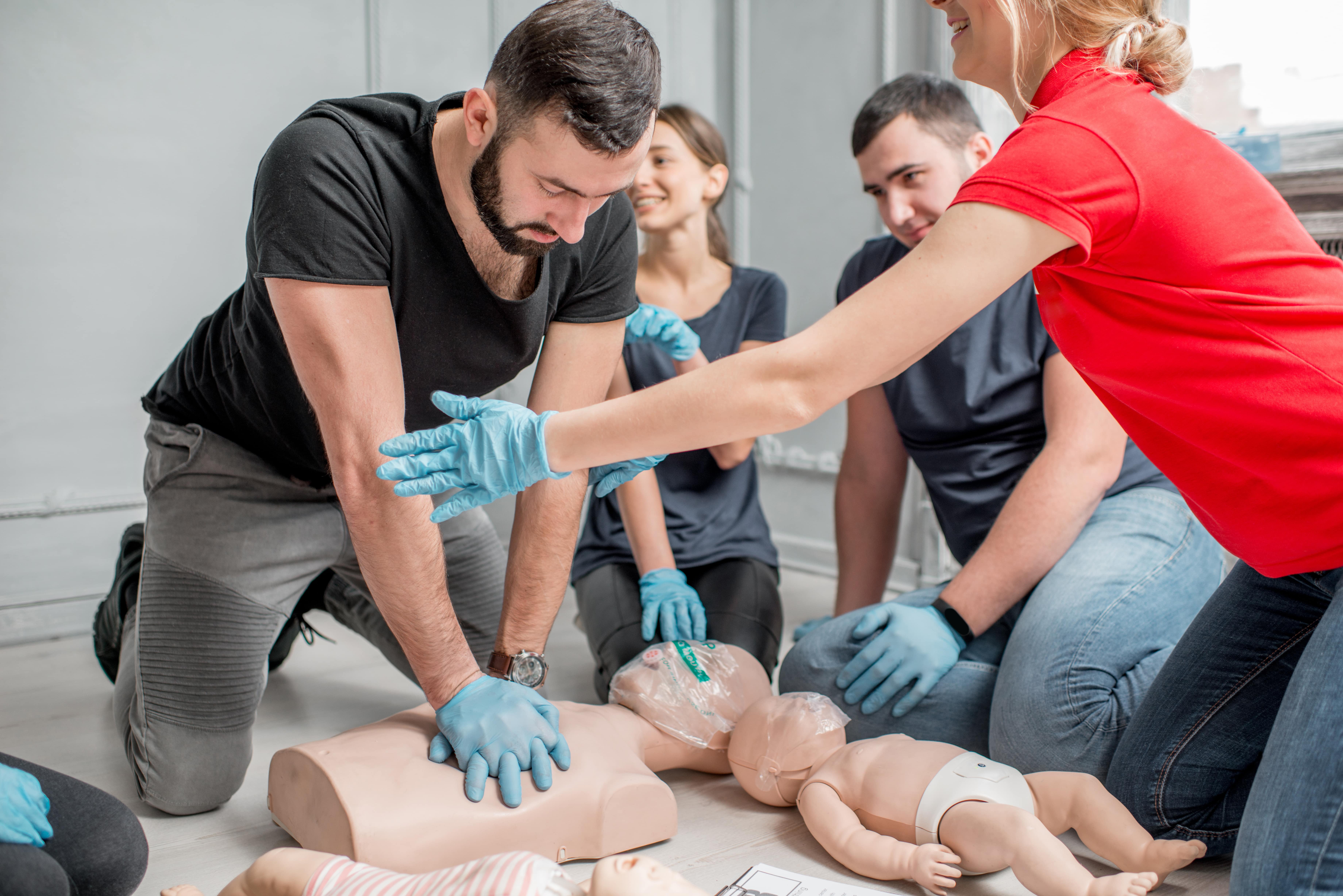Introduction
In today's fast-paced workplace, safety and security is critical. Organizations are significantly acknowledging the relevance of producing a safe area for employees. Among one of the most crucial parts of work environment safety and security training is very first aid and CPR (Cardiopulmonary Resuscitation) programs. These courses not only empower workers with essential life-saving skills but likewise cultivate a culture of safety and security within the organization. In this article, we will certainly look into the myriad reasons office safety training need to consist of emergency treatment and CPR programs, emphasizing their significance in enhancing work environment safety.
Why Work environment Security Training Need To Include Emergency Treatment and CPR Courses
The assimilation of first aid and mouth-to-mouth resuscitation courses into workplace security training has significant advantages. They furnish workers with the knowledge and skills needed to react successfully to medical emergencies, lower healing time for damaged people, and potentially conserve lives. Additionally, having educated employees on-site can infuse self-confidence among employees and assure them that their wellness is emergency first aid classes near me prioritized.

Understanding First Aid
First aid describes the instant treatment supplied to a private struggling with a small or serious health problem or injury up until specialist clinical assistance shows up. Recognizing standard emergency treatment principles can make a considerable distinction in emergency situations.
Key Elements of First Aid
Assessment: The ability to analyze a circumstance quickly can help figure out the suitable actions needed. Stabilization: Understanding exactly how to support a wounded individual prevents additional harm. Communication: Efficiently interacting with emergency situation solutions is critical for prompt assistance.The Importance of CPR
CPR is a life-saving strategy utilized in emergencies when somebody's heart beat or breathing has actually quit. It includes breast compressions and rescue breaths to maintain blood flow and oxygenation till expert assistance arrives.
How CPR Works
- Chest Compressions: These aid distribute blood throughout the body. Rescue Breaths: These give oxygen to the lungs.
Benefits of Emergency treatment and Mouth-to-mouth Resuscitation Certification
Obtaining a first aid certification or completing CPR programs features many advantages, both for individuals and organizations.
Enhanced Employee Confidence: Employees really feel a lot more safe recognizing they have life-saving skills. Reduced Recovery Time: Quick reaction via first aid can cause much better end results for hurt individuals. Compliance with Regulations: Lots of markets call for qualified employees as component of their health and safety regulations.Creating a Society of Security Via Training
Implementing first aid and CPR training promotes a society that prioritizes employee wellness.
Encouraging Teamwork
Training sessions usually entail team-building exercises that improve collaboration amongst employees.
Building Count on Between Employees and Management
When management invests in employee training, it shows dedication to their health and wellness, bring about enhanced morale.
First Aid Flows vs. CPR Courses: What's the Difference?
While both types of courses are essential, they focus on various skill sets.
First Aid Courses
These courses cover a vast array of topics past simply heart emergency situations, consisting of:
- Wound care Burns Choking
CPR Courses
CPR programs particularly focus on methods connected to heart attack circumstances, highlighting:
- Adult CPR Child/ baby resuscitation Use of an Automated External Defibrillator (AED)
Choosing the Right Training Provider
Not all training suppliers are produced equal; consequently, choosing one that satisfies your organization's requirements is critical.

Accreditation Matters
Ensure that your selected company uses approved programs identified by appropriate authorities.
Instructor Experience
Consider instructors' certifications; experienced trainers usually provide richer understanding experiences through real-world examples.
Incorporating First Aid into Office Safety And Security Policies
Organizations ought to incorporate first aid demands into their more comprehensive safety and security plans for extensive coverage.

Regular Training Updates
Conducting regular refresher courses makes sure that knowledge stays present among employees.
Creating Emergency Action Plans
Having clear strategies in place can direct qualified personnel throughout emergencies.
Legal Implications of First Aid Training in the Workplace
Employers have lawful hltaid009 CPR Course responsibilities regarding workplace security; applying first aid training can aid reduce threats associated with non-compliance.
Negligence Claims
Failure to provide ample training might leave companies at risk to lawsuits if an occurrence happens because of lack of preparedness.
FAQ Section
What is included in a normal emergency treatment course?- A typical first aid course includes instruction on examining injuries, treating wounds, handling burns, handling choking cases, and carrying out CPR if necessary.
- Most CPR training courses last in between 4-- 6 hours relying on whether it's standard or innovative training.
- While not always legitimately mandated, having actually licensed employee can dramatically improve workplace safety and security standards.
- Many certified companies provide online revival alternatives for emergency treatment certifications that include analyses via video conferencing.
- Yes, sectors such as building and construction, health care, education, and production commonly have governing requirements necessitating skilled workers on site.
- It's suggested that employees take part in refresher courses every two years or earlier if there are significant modifications in treatments or regulations.
Conclusion
To sum up, integrating first aid and mouth-to-mouth resuscitation into work environment security training is not merely an alternative but a requirement in today's workplace where emergencies can develop anytime. Organizations advantage tremendously from having trained employees all set to react efficiently throughout situations while fostering an environment where staff member health takes precedence over all else. Therefore, it ends up being noticeable why workplace safety training should include emergency treatment and CPR courses-- they conserve lives while promoting an aggressive strategy toward health and safety standards within organizations throughout various sectors.
By focusing on such essential training initiatives-- emergency treatment certificates acquired through credible providers together with useful hands-on experience-- companies can substantially boost their general emergency situation preparedness levels while additionally constructing stronger teams with the ability of dealing with any scenario head-on!